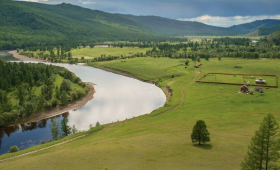Exploring Kinyeti Mountain in South Sudan
If you’re seeking an adventure in a less-traveled destination, consider Kinyeti Mountain in South Sudan. This mountain, part of the Imatong Mountains, offers a unique blend of natural beauty and cultural richness. Here’s what you need to know to plan your trip.
The Natural Splendor of Kinyeti Mountain
Kinyeti Mountain is the highest peak in South Sudan, reaching an elevation of 3,187 meters (10,456 feet). It’s located near the border with Uganda, within the Imatong Mountains. The area is known for its lush montane forests and diverse ecosystems. As you hike, you’ll encounter a variety of plant species, some of which are endemic to this region. The mountain’s elevation creates a cooler climate, providing a refreshing escape from the heat of the lowlands.
Flora and Fauna
The biodiversity of Kinyeti Mountain is remarkable. The montane forests are home to numerous bird species, making it a haven for birdwatchers. While the existence of a “Kinyeti leopard” is not documented, the area does support other wildlife, including primates and small mammals. The rich plant life includes unique wildflowers and towering trees that add to the mountain’s allure.
Engaging with Local Culture
The communities surrounding Kinyeti Mountain have a deep cultural connection to the land. The local tribes consider the mountain sacred and have traditions that reflect this reverence. Engaging with these communities offers insight into their way of life. You can learn about their customs, participate in local events, and enjoy traditional dishes. The hospitality of the locals is genuine and adds depth to your visit.
Best Time to Visit
The ideal time to explore Kinyeti Mountain is during the dry season, from December to March. During these months, the weather is more predictable, and the trails are more accessible. The wet season, which spans from April to November, can make hiking challenging due to slippery paths and potential flooding.
Travel Logistics
To reach Kinyeti Mountain, fly into Juba International Airport, the main entry point to South Sudan. From Juba, you’ll need to arrange transportation to the mountain, which is best done with the help of a local guide or tour operator familiar with the region. Given the remote nature of the area, planning your logistics in advance is crucial.
Getting Around Locally
Once at Kinyeti Mountain, transportation options are limited. Hiring a local guide is highly recommended. They can navigate the trails, provide safety tips, and share insights about the environment and culture. Ensure you have appropriate gear, such as sturdy hiking boots, and pack essentials like water, sunscreen, and insect repellent.
Visiting Kinyeti Mountain is an adventure that combines natural beauty with cultural exploration. While the journey requires careful planning, the experience of hiking through its pristine landscapes and engaging with local communities is rewarding. Embrace the challenges and enjoy the unique offerings of this remarkable destination.




